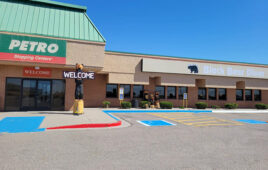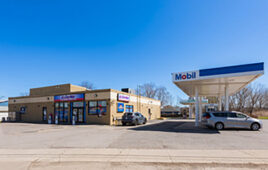Kathy (not her real name) is a grandmother in her late 40s who recently movedfrom an apartment in Scottsdale, AZ, to a house in Phoenix. “So I don’t havemuch connection to my new location’s store yet, but there is a sort of instantfriendship with the guy at the QuikTrip I go to now,” she says.
“The [store] is super busy, and he’s like a superhero…moving like lightning, like he had six arms or something. He’s ringing up two customers at once, handing someone a napkin, answering a question for someone else. He is really amazing. I can sure see a relationship beginning there.”
Kathy’s comments reveal a couple of surprising findings contained in a new Convenience Store Decisions study of c-store shoppers. The first is that she actually used the word relationship
to describe the growing bond between her and her favorite convenience store. The second is that, like Kathy, many of your customers have a high opinion of the people who work behind your counters. She embodies one of the key underlying themes of the study: Customers want more of a relationship with your stores and the people they interact with there. This “relationship” goes well beyond the notion of a simple transaction and can be a deciding factor in where a customer shops.
Unfortunately, other channels appear to be far ahead of convenience in terms of understanding these relationships, elevating employees’ perceptions of both their jobs and their performance— and leveraging the customer loyalty that often results.
“At Starbucks, workers who put in more than 20 hours a week are considered owners, and the people behind the counter aren’t associates, they’re baristas—experts in making coffee,” says Tom Barbitta, senior vice president of CoyneBeahmShouse, the branding agency that partnered with Convenience Store Decisions to conduct the study. “In much the same way, a lot of convenience store employees are consideredsuperheroes—those considered to be the best at what they do. They are the ultimate multitaskers.”
Barbitta says there is a clear opportunity for convenience retailers to do what Starbucks has done—elevate the people behind the counter “so that they almost become an aspirational figure to the customer,” empowered to provide not only great customer service, but also to engage customers on a more emotional level. While the challenges of doing so—improved hiring, training and retention programs, for example—can’t be minimized, neither can the benefits.
The study pinpoints a number of other themes that shed additional light on the emotional connections customers make to their stores and how those connections affect what and where consumers buy. Here’s a look at the most well-defined themes that emerged, along with a sampling of verbatim customer comments to illustrate each point:
- Convenience stores are often viewed asa haven, providing escape or respitefrom customers’ hectic lives. Do you see yourstores as an oasis, or a sanctuary? Your customers often do. The few minutesthey spend in your stores can sometimes be a moment of tranquility— the breakthey need that gets them through the rest of their day.
What customers say
“As soon as I’m inside, I feel like I’m in a comfortable, familiarplace. The color patterns suggest a clean, calm, semi-oasis from the hecticworkday as I make my way to the coffee stand….It’s actually fairly quiet insidea
QuikTrip—almost like a sanctuary away from the daily grind at work. It’s likeyou’ve found an oasis stocked with your favorite meal or beverage.”
Paul, late 20s, St. Louis
- There is a significant (but underutilized)role that nostalgia plays in connectingwith customers emotionally. With the possible exceptionof only the oldest Baby Boomers, virtually all of your customers (and potentialcustomers) grew up with convenience stores, and whether you realize it ornot, you hold a cherished spot in their hearts. You have played a role inmany of their rites of passage—the first place they spent their own money,the first place they bought cigarettes or beer when they came of age, theirfirst stop for gas after they got their driver’s license—and so you have becomepart of the fabric of their lives.
What customers say
“The convenience store was always a placewhere my friends and I would gather after school and trade the baseball cardswe just purchased.”
John, 30-something, St. Louis “I remember as a kid going to the local 7-Eleven and purchasing Slurpees and candy with my allowance. I still remember the Star Bar candy bar. That was an ultimate weekend of joy.”
Stan, 30-something, Phoenix “My first memories involved getting Slurpees at 7-Eleven after begging my parents to take me there. It reminds me of being youthful.”
Jake, late 20s, Portland, OR
• There is an incredible amount of passionaround your destination offers. This may fallinto the category of “confirming what you already knew” (see sidebar, p. 34),but consumers are intensely loyal to products and brands they have developedan affinity for, especially coffee, fountain, FCB and foodservice.
What customers say
“I really like fountain drinks vs. bottlesor cans. I’m a Diet Pepsi person, and I used to find specific locations thatoffered that at the fountain. For a long time I would never shop at Circle K[stores] because they only provided Coke products.”
Stan, 30-something, Phoenix “Even though Circle K and 7-Eleven are usuallycloser to home/work, I’ve started driving a little further to go to QuikTrip.Reason #1: 59¢ 32-oz. fountain drinks. Reason#2: HUMONGOUS fountain selection.Reason #3: CRUSHED ICE!”
Monty, late 20s, Raleigh, NC “I purchase my coffee [at 7-Eleven] every morning.They have the absolute best coffee and even have a coffee club—buy four getone free. I haven’t found a coffee yet at another convenience store that compares.”
Maggie, 30-something, Tampa, FL
• Email may be an underutilized toolfor reaching out to customers. Most customerssay they would welcome emails about new products and promotions. This tacticcould even work for light or infrequent c-store shoppers, who are more likelyto cite perceived high prices as a barrier to more frequent c-store visits.
What customers say
Consumers were asked whether they would be interested in receiving emails from their favorite c-store about new products or promotions:
“That way I could find out about daily deals, upcoming specials, new store locations, etc. That would be really great. Absolutely sign me up!”
Kathy, late 40s, Phoenix “Absolutely! I love trying new products and deals. I tend to be a leader and trendsetter in my office.”
Monty, late 20s, Raleigh, NC “If they could list all of the prices at their gas stations the day before they change (either up or down), it would be a great servic
e. It might cost them revenue, but hopefully they would increase customer loyalty and it would provide more benefits than it ends up costing them. It would be a great use of a [ regular] email.”
Paul, late 20s, St. Louis
Confirming what you already knew?Some of the consumer feedback in the survey confirms what many convenienceretailers already knew (or at least suspected). Still, there is value inhearing customers’ opinions about key parts of the convenience offer, suchas location, speed of service, selection, in-stock performance and foodservice. • Speed is king. Customers love you because you’re fast. Core c-storeusers appreciate the ability to stop and pick up an item or two and beback on their way in two or three minutes, and they like being able to“multi-task” and get gas and other items at the same time and do it quickly.The bad news is, speed is quickly becoming “table stakes” in the battlefor convenience shoppers. Customers say: “Convenience stores are much better with lines. I HATEstanding in lines. Convenience stores make my life easier.” “Could you imagine having to stop at the grocery store for a fountainsoda? That would be horrible.” “They [QuikTrip] staff for convenience. During peak business, they runtwo or three clerks to get folks in and out.” • The price/value equation is in balance. Core customers view c-storeprices overall as being fair, and in many cases, a bargain. Even whenthere is a perceived price barrier, consumers are willing to trade offprice for the other benefits of shopping in a c-store, such as being ableto park in front of the store. Customers say: “I remember years ago the prices at convenience storeswere always WAY higher than grocery stores (I guess on the premise thatyou will be willing to pay for the convenience). But now prices are aboutthe same as non-convenience stores. And in my area, convenience storesalways have the lowest gas prices, which is really important with theprices of gas nowadays.” “When they have a sale it’s usually pretty good. For example, sometimesthe 7-Eleven down the street will have a gallon of milk on sale for $1.99.That’s better than the local supermarket.” • C-stores have arrived as a foodservice destination. This doesn’t justapply to the Sheetzes and Wawas of the world that make fresh food on site,either. Customers say: “Many [c-stores] have Subways or pizza places. The qualityof food has risen quite a bit over the years and the food choices haveexpanded to make them a viable source of quick meals.” “Although it won’t be as healthy as a home-cooked meal, I would saythat (for the most part) the food at QuikTrip and Mobil On The Run woulddefinitely be healthier than fast food places…and quicker to get thansitting in drive-thru.” “[I] don’t feel like the food at a convenience store is somehow ‘lowerclass’ just because they also sell gas. [I] look past the stereotypesand simply look at the quality of the product and the other benefits ofshopping there, rather than the image that it has in some peoples’ eyes.” • Out-of-stocks can be a deal-breaker. Customers rate c-stores highlyfor having what they want when they want it—but are quick to turn on thosewho don’t. Customers say: “I love ampm. They’re always reliable in the sense thatthey’re always clean and always have…my brand of chewing tobacco.” “If they don’t have the brand of tobacco I use (which is a major brand),then I won’t go back there because that’s just absurd that they don’thave it. I don’t remember the convenience stores that do have it, butI always remember not to go back to the ones that don’t.” Lots more where this came fromThe information contained in this article represents a brief summary ofsome of the study’s key findings, but it represents only the “tip of theiceberg” in terms of the feedback available on a wide range of topics. Thisinformation is not only insightful for both convenience retailers and suppliers—it’salso a great read. Here’s a short list of some of the additional topics addressed in theconsumer study: • Your “personal history” with convenience stores • How do you use convenience stores? • What’s your favorite store, and why? Describe the store’s personality.What celebrity has a similar personality? If your favorite store was acar, what would it be? • Describe the colors, textures, sounds and smells of your favoriteconvenience store. • What improvements could make you shop at c-stores more often in thefuture? • What advertising or promotions do you remember seeing about your favoritestore? • What if your favorite store were no longer available? What would bemissing in your life? • Imagine a Wal-Mart/Home Depot convenience store. What would it belike, and would you shop there? In addition to consumer comments about these topics, the study alsocontains analysis by key retailer executives. All of this material, aswell as a summary of the study methodology, will soon be available atCSDecisions.com. |




